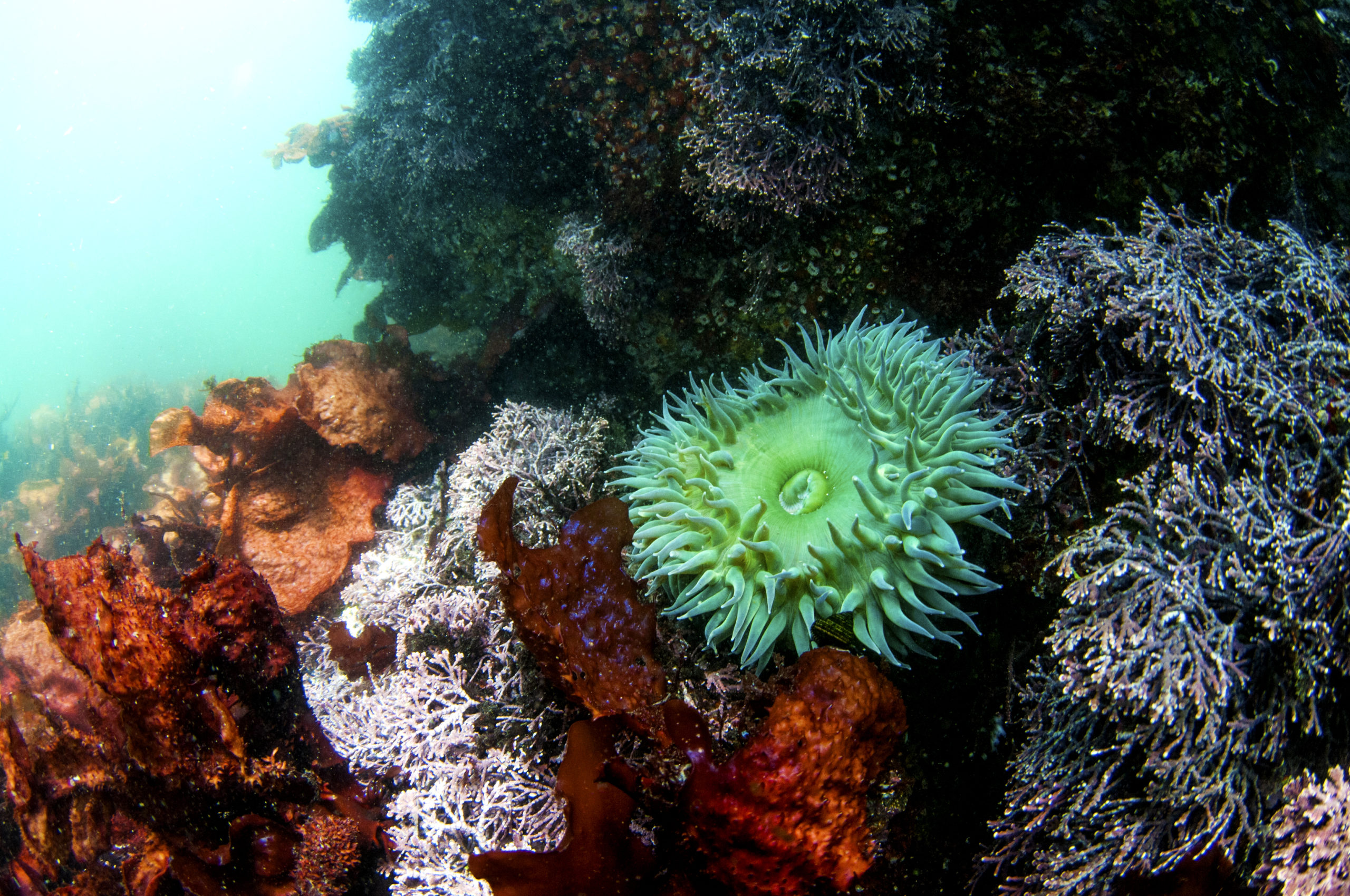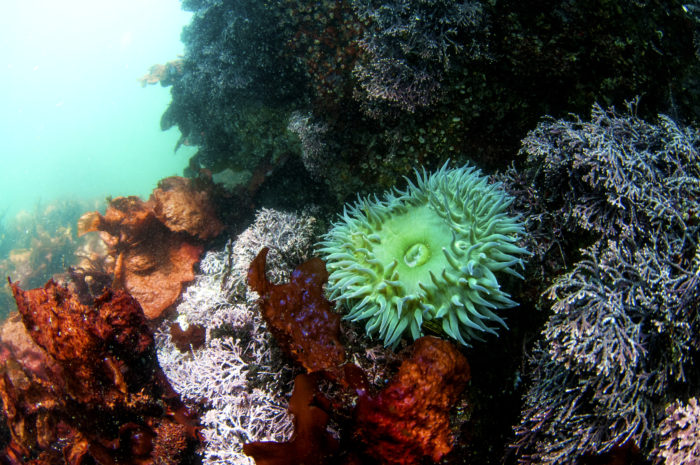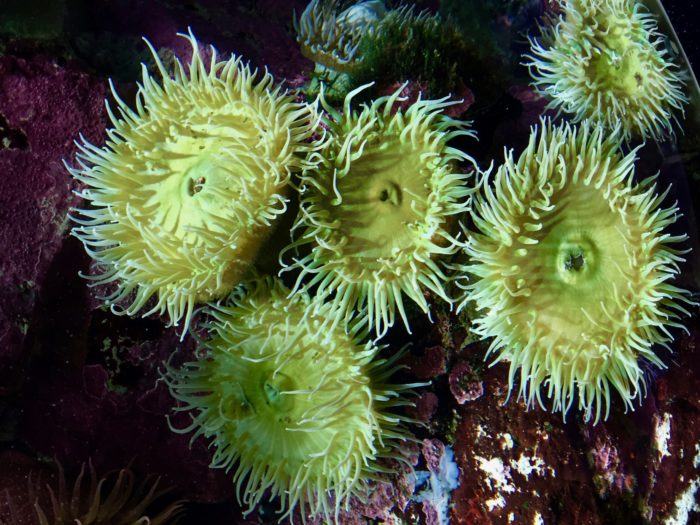
Sea Wonder: Giant Green Anemone

Photo credit: Melissa Anne Thomas
Its name suggests a towering presence that would inspire vintage horror movies about sea monsters, but the giant green anemone (Anthopleura xanthogrammica) is really just larger than most other species of anemone.
Description
Anemones are marine invertebrates and closely related to corals and jellyfish. They are radial in shape with colorful tentacles that make them look more like plants than animals, earning them the nickname “flowers of the sea”. The giant green anemone is a grassy green color, which comes from green pigment cells in its skin and a species of photosynthetic algae that lives in the lining of its gut, which is similar to how corals get their bright colors. These anemones also produce a chemical compound that the pharmaceutical industry uses as a beneficial heart stimulant to help people who experience certain cardiovascular conditions.
Their name is a little misleading because giant green anemones only measure to be about seven to 12 inches in diameter and about a foot tall. Their tentacles can reach lengths of nearly 10 inches in adulthood. Their bodies are columnar in shape and the animals on occasion cover themselves with pieces of shell and gravel to reflect UV rays, retain moisture, and regulate body temperature when the tide drops. Their tentacles have stinging cells that they use to forage, but their sting is too light to cause us pain.
Diet & Habitat
Giant green anemones feed on smaller invertebrates and fishes and also receive nutrients from the algae living in the lining of their guts. Their diet mainly consists of mussels, crabs, and worms, which they paralyze with their tentacles before pulling into the oral cavity at the center of their bodies. Some species – mostly fish – have evolved a mucus membrane that protects them from anemone stings, allowing them to take shelter under the anemones’ flowing tentacles. Giant green anemones are sessile in adulthood, meaning they rarely move from the spot to which they attach early in life, and they often settle in mussel beds for easy access to a sustainable food source.
The giant green anemone’s range spans along the North American west coast from Alaska to central Baja California in Mexico, including all of the west coast marine sanctuaries. They are commonly found where water is present for most of the day, including tidepools and shallow harbors, but we also find them along exposed shorelines, on dock pilings, in deeper channels, and harbors. They’re a particularly common site along the Oregon coast, including near Olympic Coast National Marine Sanctuary.
Life History
Giant green anemones are solitary creatures but may live near other individuals in fairly dense colonies. They spawn annually when waters are warmer and food is plentiful, the exact timing of which is dependent on the latitude at which they are located. The thousands of fertilized eggs are swept away by the water column, and those that aren’t eaten eventually settle onto fixed structures and hatch a few days later. Their lifecycle includes a larval and juvenile stage before reaching adulthood and sexual maturity at five to 10 years of age. Experts aren’t exactly sure how long a giant green anemone can live, but there are records of an individual in human care reaching 80 years of age with an estimated maximum lifespan of 150 years or more for the species.
Threats & Conservation
All invertebrate species are integral parts in food webs because they both consume and produce energy. Giant green anemones have natural predators that include sea stars, sea spiders, and larger fish. Some predators feed on the anemones’ columns and others snack on the tentacles.
Populations of giant green anemones appear to be stable, but all coastal marine species are at risk from coastal development, pollution that includes waste oil and agricultural runoff, warming ocean waters and ocean acidification. Tide pool species like the giant green anemone are also at risk of being loved to death by visitors. If you engage in tide pooling, practice your Ocean Etiquette and tread lightly as you explore to avoid crushing plants and animals, and remember to never move or take creatures from the habitat in which you found them.

Photo credit: Fernando Ibanez
